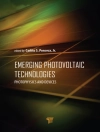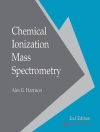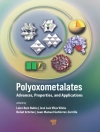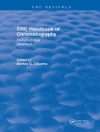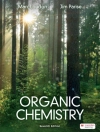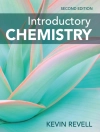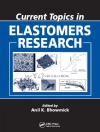Leading researchers discuss the past and present of
chromatography
More than one hundred years after Mikhail Tswett pioneered
adsorption chromatography, his separation technique has developed
into an important branch of scientific study. Providing a full
portrait of the discipline, Chromatography: A Science of
Discovery bridges the gap between early, twentieth-century
chromatography and the cutting edge of today’s research.
Featuring contributions from more than fifty award-winning
chromatographers, Chromatography offers a multifaceted look
at the development and maturation of this field into its current
state, as well as its importance across various scientific
endeavors. The coverage includes:
* Consideration of chromatography as a unified science rather than
just a separation method
* Key breakthroughs, revolutions, and paradigm shifts in
chromatography
* Profiles of Nobel laureates who used chromatography in their
research, and the role it played
* Recent advances in column technology
* Chromatography’s contributions to the agricultural, space,
biological/medical sciences; pharmaceutical science; and
environmental, natural products, and chemical analysis
* Future trends in chromatography
With numerous references and an engaging series of voices,
Chromatography: A Science of Discovery offers a diverse look
at an essential area of science. It is a unique and invaluable
resource for researchers, students, and other interested readers
who seek a broader understanding of this field.
Jadual kandungan
Dedication.
Preface.
Acknowledgments.
Editors/Authors.
Contributors.
1 Chromatography–A New Discipline of Science (Robert L.
Wixom, Charles W. Gehrke, Viktor G. Berezkin, and Jaroslav
Janak).
2 Chromatography–A Unified Science (Thomas L.
Chester).
3 Paradigm Shifts in Chromatography: Nobel Awardees (Robert
L. Wixom).
4 The Trails of Research in Chromatography (Robert L.
Wixom).
5 Today’s Chromatographers and Their Discoveries
(2000-2008) (Robert L. Wixom and Charles W.
Gehrke).
6 History and Developments in Chromatographic Column Technology
and Validation to 2001 (Ernest Bayer, Walter G. Jennings, Ronald
E. Majors, J. Jack Kirkland, Klaus K. Unger, Heinz Engelhardt,
Gerard Schomburg, William H. Pirkle, Christopher J. Welch, Daniel
W. Armstrong, Jerker O. Porath, Jan B. Sjövall, and Charles W.
Gehrke).
7 Chromatography–Advances and Applications in
Environmental, Agricultural, Space, Biological, and Medical
Sciences (Charles W. Gehrke and David S. Hage).
8 Chromatography–Advances and Applications in
Pharmaceutical Analysis in the Corporate Sector (Pat Noland,
Terry N. Hopper, Michael W. Dong, Yong Guo, Todd D. Maloney, and
Raymond N. Xu).
9 Chromatography–Advances in Environmental and Natural
Products, Chemical Analysis and Synthesis (Del Koch, Lyle
Johnson, Charles W. Gehrke, Pat Sandra and Richard B. Van
Breemen).
10 The Chromatography Story Unfolds (Charles W. Gehrke and
Robert L. Wixom).
11 Chromatography in the Millennium–Perspectives
(Robert L. Wixom and Charles W. Gehrke).
Author/Scientist Index.
Subject Index.
Cover Photographs Key.
Mengenai Pengarang
ROBERT L. WIXOM (1924-2009). As Professor and then
Professor Emeritus of Biochemistry at University of
Missouri-Columbia, Dr. Wixom received three teaching awards,
including a nomination by MU students for the Conservation Educator
of the Year (1996) for the State of Missouri. He served as a
departmental representative to the Graduate Faculty Senate
(1970-1993) and the chair of the Biological Sciences Sector,
(1989-1992), which included a key role in three new major
university programs. He was the co-initiator of the UMC
Environmental Affairs Council, serving as their first chair for
three years (1990-1994). In 2003, he received the Earlham
College Outstanding Alumni Award.
CHARLES W. GEHRKE (1917-2009). As Professor and
then Professor Emeritus of Biochemistry at University of
Missouri-Columbia, Dr. Gehrke authored over 260 scientific
publications in analytical chemistry and biochemistry, including a
number of books. He was widely known for developing a quantitative
gas chromatographic analysis method for amino acids, which, with
NASA, advanced the analysis of moon rocks for signs of life. Dr.
Gehrke developed many official analytical methods that were adopted
by the Association of Analytical Chemists (AOAC) and received
numerous awards, including the AOAC Harvey W. Wiley Award.
Drs. Wixom and Gehrke continued to contribute to the advancement
of scientific knowledge and education in many ways long after
retiring from teaching and research at the University of Missouri.
With a great appreciation for history and the groundwork that has
been laid for future generations of scientists, they teamed up to
produce this book Chromatography: A Science of Discovery.
This is their last publication, as they both have passed away. The
future of chromatography will benefit from their lifelong
efforts.


